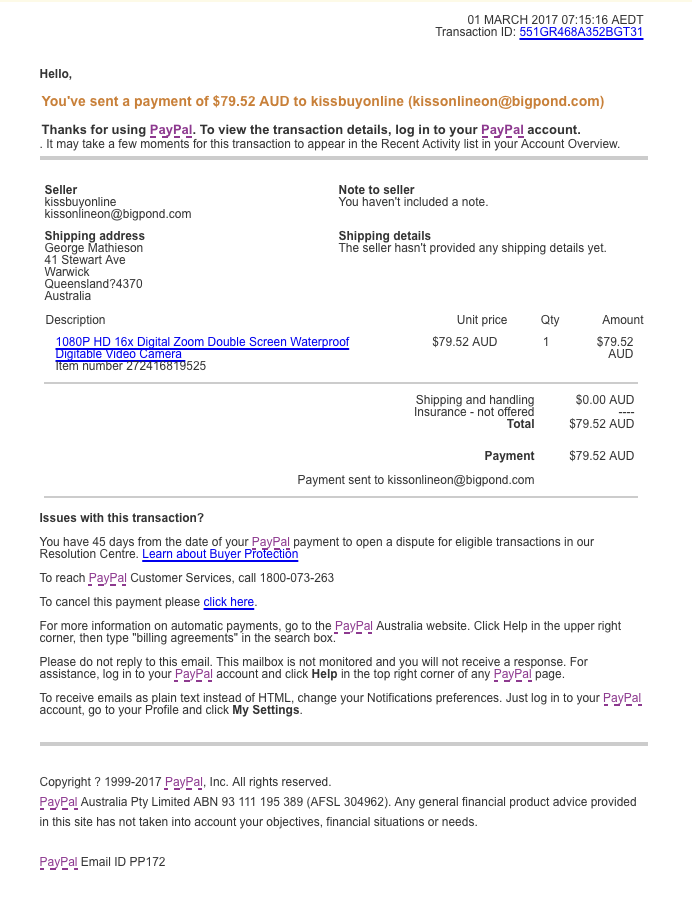Outsmart The Scammers – Here’s How…
THINK BEFORE YOU CLICK.
IT’S IN THE LINK…
I really enjoy online shopping, and the convenience of buying things through the click of a button.
I really enjoy online shopping, and the convenience of buying things through the click of a button.
I recently purchased an item off eBay, and used PayPal to pay for the item.
A few days later, I received an email that looked like this:

I knew I didn’t order a Double Screen Waterproof Camera…, but the PayPal email looked very similar to the original PayPal email that I had received for my legitimate eBay purchase.
In most cases, the instant reaction is to click through on the links in that email, and dispute the purchase… but this is exactly what the scammers want you to do!
We’ve covered this topic previously, but these types of emails are becoming increasingly popular, so it doesn’t hurt to revisit this security topic.
In most cases, the instant reaction is to click through on the links in that email, and dispute the purchase… but this is exactly what the scammers want you to do!
We’ve covered this topic previously, but these types of emails are becoming increasingly popular, so it doesn’t hurt to revisit this security topic.
SPOT THE DIFFERENCE

ITEMS TO CHECK IN SCAM EMAILS:
- PayPal will always use your full name
- Lack of PayPal logo
- Lack of eBay logo
- When you hover/mouse over the links (which will usually direct you to the website), note the website is not PayPal. It will be the website that the scammer wants you to click through to
If you are suspicious of your PayPal activity, don’t click through to your PayPal account via any emails.
If in doubt, always open a new browser tab, and go directly to https://www.paypal.com and check your account.
You can also forward those spam emails to spoof@paypal.com and report those emails.
You can definitely enjoy online shopping, but be vigilant and think before you click!




